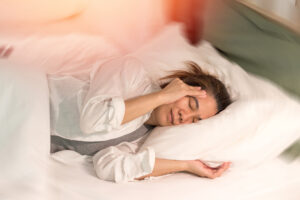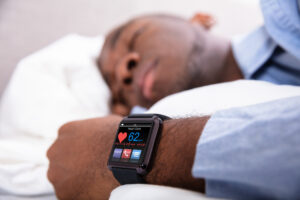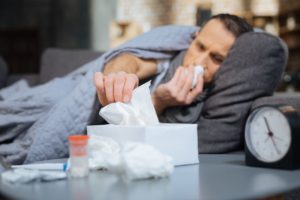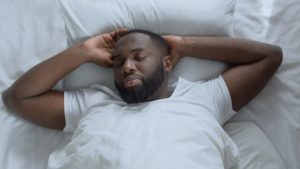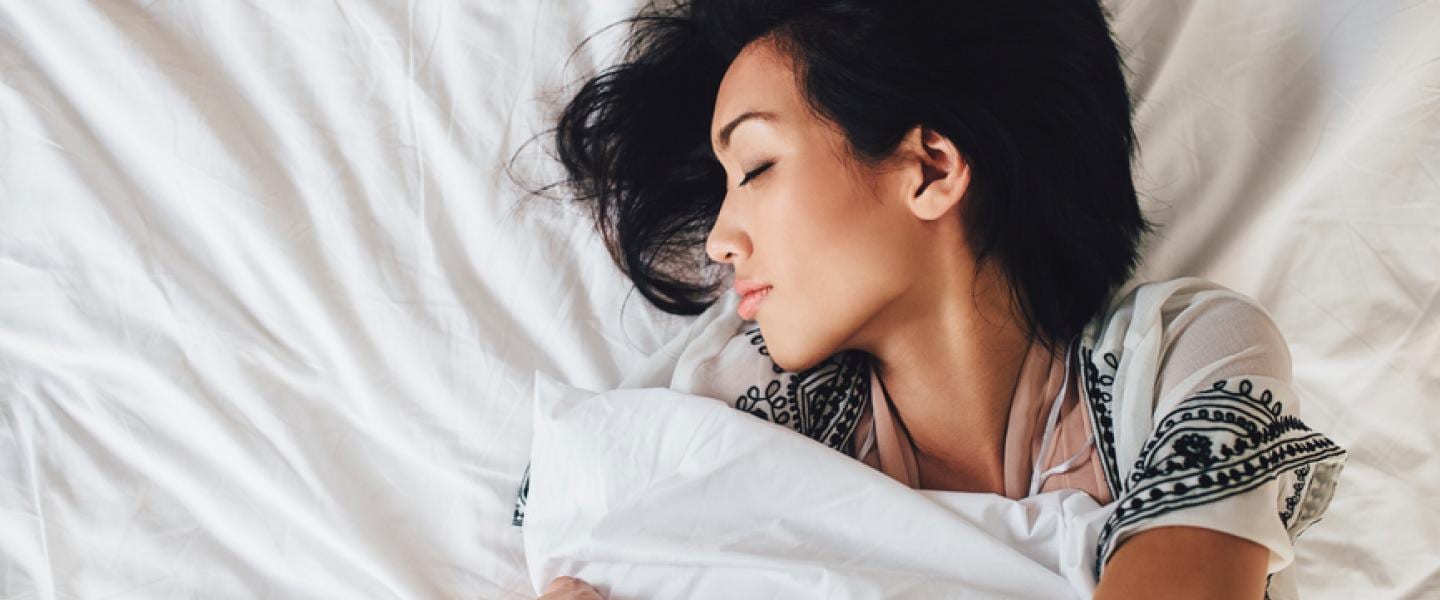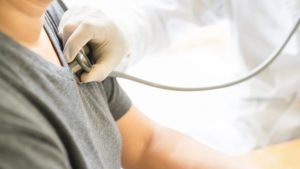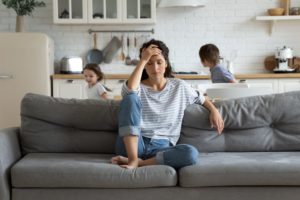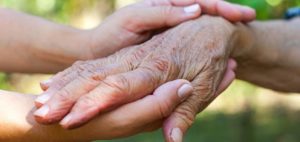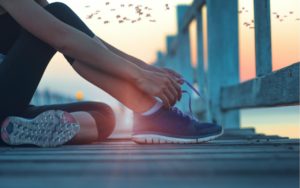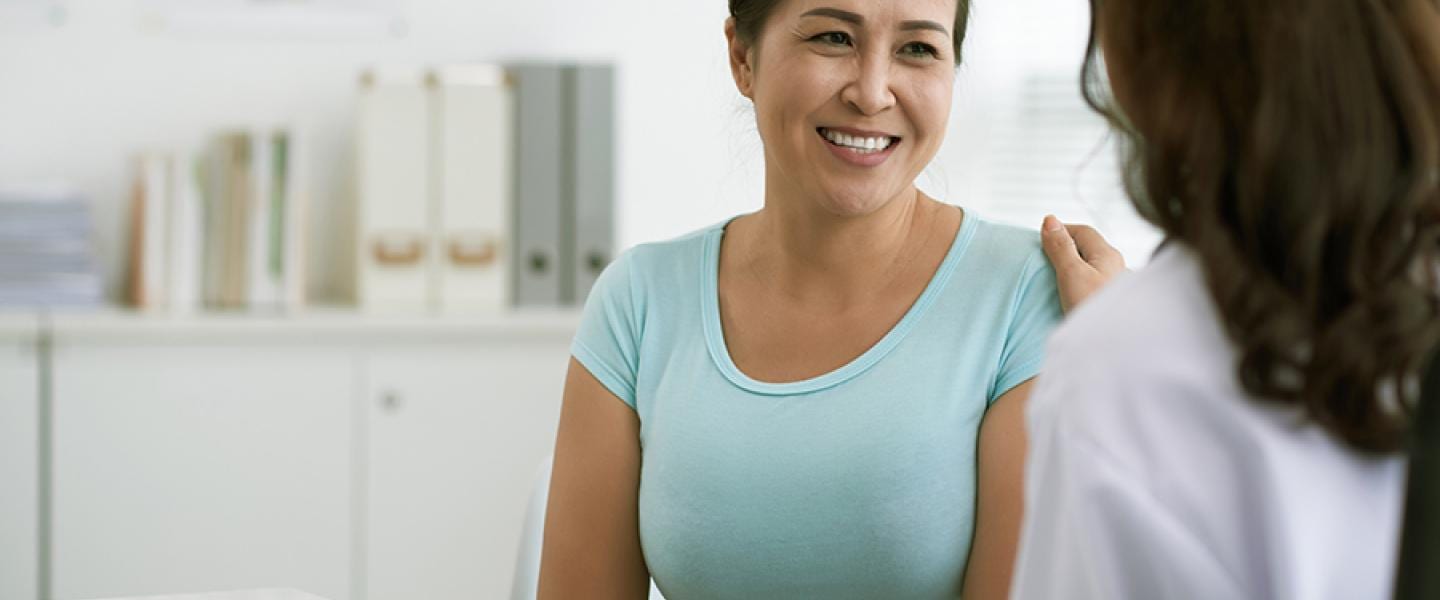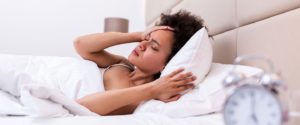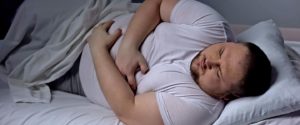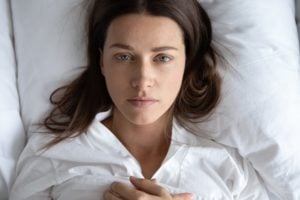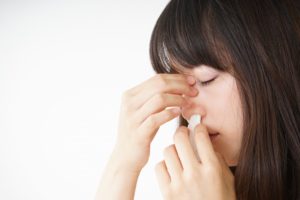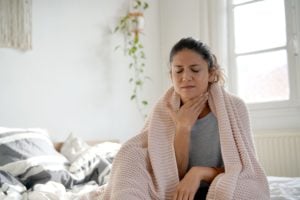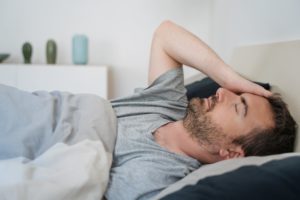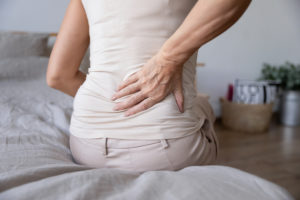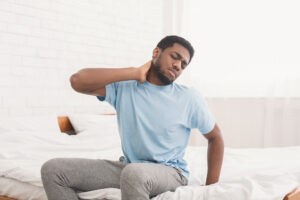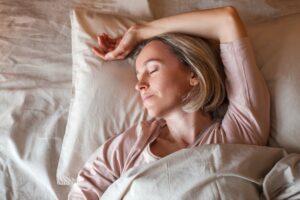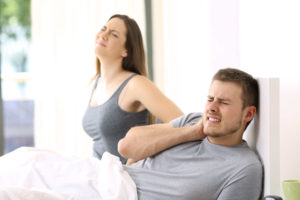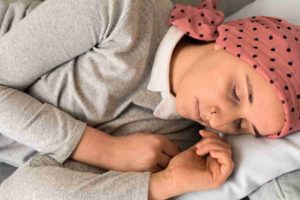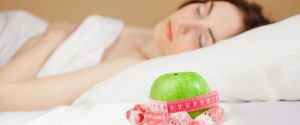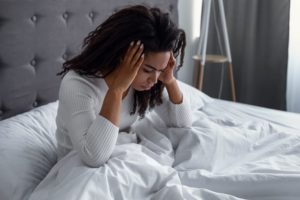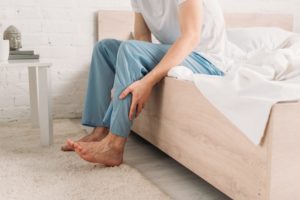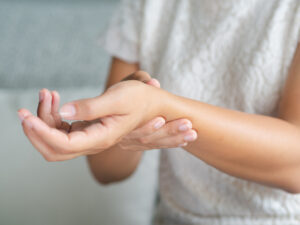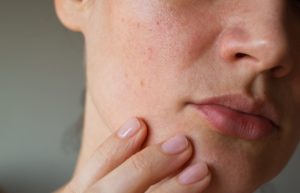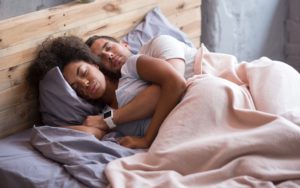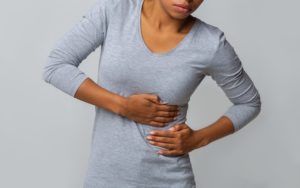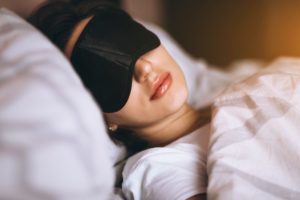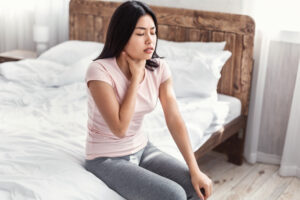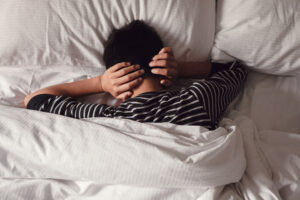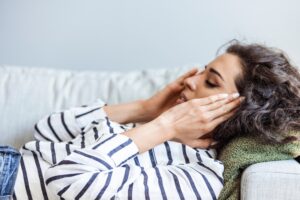Why Does My Lower Back Hurt When I Wake Up?
- Causes: Morning lower back pain is often caused by poor sleeping posture, an unsupportive mattress, or underlying health issues like arthritis, disc problems, or muscle stiffness.
- Prevention: Maintaining good sleep posture, using a supportive mattress, and staying physically active during the day can help prevent morning lower back pain.
- Pain Relief: Gentle morning stretches, applying heat, or using over-the-counter pain relievers can ease stiffness and reduce discomfort upon waking.
- Next Steps: If your lower back pain continues, talk to your doctor or invest in a new mattress better suited to your needs.
Lower back pain is the most common type of musculoskeletal pain experienced by adults, with 84% of people experiencing it at least some point in their lives, and 23% experiencing it on a chronic basis.
Some mild back pain in the morning is not unusual. In many cases, you can chalk it up to the normal stiffness you feel after staying in one position for several hours. But, if you’re still feeling pain after you’ve gotten out of bed and started to move around, there may be something specific causing your back pain. It could be an underlying medical condition, an inadequate mattress, or even your sleeping position.
Reasons for Waking Up With Lower Back Pain
There are a number of potential causes for lower back pain in the morning. Here are some of the most common.
Poor Sleep Posture
If you feel lower back pain every morning after sleeping, your sleeping position could be at fault. Sleeping in an unsupportive position can increase pressure on your spine and lead to back pain.
When you sleep on your stomach, you’re more likely to twist your neck out of alignment with the rest of your spine. Depending on the firmness of your mattress, your lower abdomen may also sink more deeply than the rest of your spine, uncomfortably stretching your back out of alignment. To prevent this, try sleeping on your stomach without a head pillow and by placing a thin pillow beneath your lower abdomen.
Back sleeping makes it easier to keep your spine straight but can still lead to back pain if you don’t support your spine’s natural curves. To help prevent discomfort, place a pillow beneath your knees.
People who sleep on their side report fewer back pain symptoms, but it’s still possible to press your spine out of alignment. You can prevent this by choosing a head pillow with a loft that matches the distance between your neck and your shoulder, and sleeping with a pillow between your knees to even out your hips.

Unsupportive Mattress
Your sleeping position can only do so much to relieve lower back pain in the morning if you’re sleeping on an old, unsupportive mattress. If you have had your mattress for more than five years, it may be time to consider replacing it.
In one study, participants replaced their old mattresses , which averaged 9.5 years old, with new ones. Over the following month, their sleep quality measurably improved each week, as did their back pain.
Even if your mattress is relatively new, it may just not be a good fit for you or your sleeping position. It could be too firm or too soft to provide adequate support. In general, medium firm mattresses tend to reduce lower back pain more effectively than firm mattresses do.
Lack of Movement During Sleep
When you sleep, your body naturally goes through long periods of stillness, especially during deeper stages of sleep. While rest is essential for recovery, staying in one position too long — particularly if that position places strain on your spine — can lead to stiffness, muscle tightness, and discomfort in the lower back.
Over time, a lack of subtle movements that typically help redistribute pressure and keep the spine aligned can result in inflammation or a sense of “locking up,” particularly in the lower back. Incorporating morning stretches or changing sleep positions can help counteract these effects.
Pregnancy
Back pain is common during pregnancy. While it typically begins between the second and third trimesters , it can start as early as during the first four weeks. For some that are pregnant, their back pain worsens during sleep and can cause them to wake up.
Placing a warm compress on the back can provide relief for lower back pain, as can regular stretching. When getting into and out of bed, using your leg strength instead of your back muscles to help you stand up can help prevent straining your lower back.
Sleeping on the left side with the knees bent is also recommended during pregnancy, to relieve discomfort and support fetal health. You can support your spine during sleep by placing pillows under your abdomen, between your legs, and against the small of your back.
Post-Workout Muscle Soreness
Exercising — especially activities that target or involve the lower back, such as weightlifting, running, or core workouts — can lead to delayed-onset muscle soreness (DOMS). This type of soreness typically sets in 12 to 24 hours after intense or unfamiliar exercise and peaks around 24 to 72 hours later. If you work out in the evening, you may not feel sore right away, but by the time you wake up the next morning, stiffness and discomfort in your lower back can be noticeable.
While post-workout soreness is a normal part of the muscle recovery process, it can feel especially pronounced in the morning after your body has been still for several hours. Gentle morning stretches and staying well-hydrated can help relieve soreness, and building recovery time into your exercise routine may reduce next-day pain.
Muscle Strain or Overuse
Muscle strain is one of the most common causes of lower back pain, and it can often be triggered by overuse or sudden movements. Activities such as lifting heavy objects, twisting awkwardly, or engaging in repetitive motions can overstretch or tear the muscles and ligaments that support the spine. Even if the strain happens during the day, the discomfort can become more noticeable overnight as your body rests and inflammation sets in.
Recovery typically involves rest, gentle stretching, and over-the-counter pain relief. If the pain persists for more than a few days or worsens, it may be worth consulting a doctor or physical therapist.
Degenerative Disc Disease
Degenerative disc disease can develop naturally with age, as the spinal discs between the vertebrae decrease in height. More than 90% of adults over 65 show some level of disc degeneration .
For some people, this process can happen with minimal or no pain. For others, the pain can be intense and feel worse in the morning . Having overweight or obesity can worsen disc degeneration and any associated lower back pain.
Treatment for degenerative disc disease may include pain medications, steroid injections, ice or heat therapy, physical therapy, acupuncture, and wearing a back brace.
Fibromyalgia
Fibromyalgia affects up to 5% of people, with women being more at risk than men. The condition causes muscle pain, tension, and spasms throughout the body, including the back. Symptoms also include sleep problems, depression, and anxiety.
Although there’s no cure for fibromyalgia, doctors may prescribe muscle relaxers and pain relievers to relieve symptoms. Therapies like massage, acupuncture, and physical therapy may also be recommended.
Other Causes
A number of other factors may contribute to lower back pain upon waking up. Lower back pain can be caused by other medical conditions and lifestyle factors such as:
- Arthritis
- Endometriosis
- Kidney stones
- Mental health conditions like anxiety and depression
- Occupations that require heavy lifting, pushing, or pulling
- Old age
- Osteoporosis
- Physical injury
- Poor fitness
- Smoking
- Spinal cord problems like sciatica, spinal stenosis, or a herniated disc
- Stress
- Tumors
- Weight gain
How to Relieve Morning Lower Back Pain
It’s possible to sleep better with low back pain. You may want to consider making a few changes to your routine in order to relieve your lower back pain in the morning and start your day off more comfortably.
Change or Modify Your Sleep Position
Adjusting your sleep posture can help relieve pressure on your lower back and encourage proper spinal alignment throughout the night. For many people, sleeping on the back with a pillow under the knees or on the side with a pillow between the knees can ease lower back tension by promoting a more natural curve in the spine.
If you’re a stomach sleeper and have trouble switching positions, placing a thin pillow under your hips can help reduce strain on the lower back. Making small adjustments and experimenting with supportive pillow placement may significantly reduce pain and improve sleep quality over time.
Get a New Mattress or Topper
Investing in a new mattress — or even adding a quality mattress topper — can make a noticeable difference in how your back feels in the morning.
Research suggests medium firm mattresses are the best mattresses for back pain. In one study of people with low back pain, those who slept on medium firm mattresses reported lower pain scores both during sleep and upon getting up in the morning.
Look for options that offer a balance of cushioning and support, allowing your spine to stay properly aligned while relieving pressure points. Memory foam, latex, and hybrid mattresses are popular choices for back pain sufferers, especially when paired with your preferred sleeping position. If a new mattress isn’t in the budget, a well-chosen mattress topper can be a more affordable way to enhance comfort and reduce stiffness.
Take Over-the-Counter Pain Medicine
Over-the-counter (OTC) pain relievers can offer temporary relief from morning lower back pain, especially when the discomfort is due to inflammation, muscle strain, or post-workout soreness. Nonsteroidal anti-inflammatory drugs (NSAIDs) like ibuprofen (Advil, Motrin) or naproxen (Aleve) are commonly used to reduce inflammation and alleviate pain.
While OTC medications can help you manage occasional or mild morning pain, they should be used as a short-term solution rather than a long-term fix. Be sure to follow dosing instructions and talk to your doctor if you find yourself needing pain relief regularly. Persistent morning pain may signal an underlying issue that needs targeted treatment or lifestyle adjustments.
Try Hot and Cold Therapy
Applying heat or cold to your lower back in the morning can help reduce stiffness and ease discomfort. Cold therapy, such as an ice pack wrapped in a cloth, is most effective for reducing inflammation and numbing sharp pain, especially if the pain is linked to a recent strain or injury. It’s typically best used within the first 24 to 48 hours after the onset of symptoms.
Heat therapy, on the other hand, helps relax tight muscles and improve blood flow to the area, making it ideal for soothing chronic tension or stiffness that builds up overnight. A warm shower, heating pad, or microwavable heat wrap can be especially effective for easing into movement after waking up.
Some people benefit from alternating heat and cold depending on the nature of their pain. Always protect your skin with a barrier (like a towel) and limit sessions to 15 to 20 minutes at a time.
Get Out of Bed Slowly
Taking it slow when you get out of bed can be beneficial. You may want to use your arms to sit up slowly before moving your legs off the side of the bed. Once you plant your feet on the ground, shoulder-width apart, you can stand up slowly, using your leg strength instead of your back to help you up.
After carefully standing, you can further relieve tension by reaching your arms up above your head and stretching slowly from side to side.
Do Morning Stretches
Research shows that yoga can help manage recurring lower back pain . Simple stretching exercises, even before you get out of bed, can relieve back pain.
For example, you can lie on your back and stretch your arms and hands above your head as far as you can, with your legs and feet stretching in the opposite direction. Hold for a few seconds before releasing.
It may also help to stretch out your lower back while still on the bed. To do this, you can bring your knees into your chest and hold, wrapping your arms around them. Then gently rock from side to side.
A few more stretches can further relieve tension in the lower back and help you prepare for the day.
1. Plank
A plank increases your core strength, creating a protective effect for your spine. With a stronger core, your body can use more of your abdominal muscles instead of your back, leading to less strain and injury throughout the day.
- Lie on the floor facedown.
- Push yourself up onto your toes and forearms. Make sure that your elbows are directly beneath your shoulders and in line with your wrists.
- Keep your neck in alignment with the rest of your spine, without letting your abdomen sink too far down or up. Prevent straining your back by squeezing your abs, glutes, and thighs.
- Hold this pose for anywhere from 10 to 60 seconds.
2. Baby Cobra
When you’re experiencing lower back pain, a baby cobra pose can help stretch your back and relieve tension.
- Lie on your stomach on the floor, with your palms facing down underneath your shoulders, and your elbows and forearms close to the body.
- Slowly push yourself up using your arm strength, with your head facing forward and your neck straight.
- Hold for 10 to 15 seconds, then lower down.
3. Chair Pose
- Stand up with your legs shoulder-width apart and your toes facing forward.
- Squat down like you’re sitting into a chair.
- Keep your knees bent at a 90-degree angle, with the goal of keeping them over your heels instead of your toes.
- Hold for a few seconds, then stand back up.
Stay Active Throughout the Day
Daily exercise can help keep your body limber. It also improves your sleep quality . A simple form of exercise, like walking, can be beneficial for reducing pain and improving sleep quality.
If you sit for long periods of time at your work, make sure to stand up, stretch, and walk around every 30 minutes or so. If your desk chair is not supportive, place a pillow or rolled towel behind your back for lumbar support, and let your feet rest on a footstool.
When to Talk to Your Doctor
While occasional morning back pain is common and often resolves with simple lifestyle adjustments, it’s important to consult a doctor if the pain is persistent, worsening, or interfering with your daily life. You should also seek medical attention if your back pain is accompanied by symptoms such as numbness or tingling in your legs, weakness, unexplained weight loss, or loss of bladder or bowel control, as these may indicate a more serious underlying condition.
Additionally, if your pain doesn’t improve with at-home care like stretching, heat or cold therapy, or over-the-counter medications, a healthcare provider can help identify the cause and recommend more targeted treatments. Chronic pain that lasts more than a few weeks, or pain that wakes you up at night, may require imaging tests or physical therapy to properly address the issue. Early intervention can prevent the problem from becoming more severe and help you return to restful, pain-free sleep.

Still have questions? Ask our community!
Join our Sleep Care Community — a trusted hub of sleep health professionals, product specialists, and people just like you. Whether you need expert sleep advice for your insomnia or you’re searching for the perfect mattress, we’ve got you covered. Get personalized guidance from the experts who know sleep best.
References
12 Sources
-
Balagué, F., Mannion, A. F., Pellisé, F., & Cedraschi, C. (2012). Non-specific low back pain. Lancet (London, England), 379(9814), 482–491.
https://pubmed.ncbi.nlm.nih.gov/21982256/ -
Cary, D., Briffa, K., & McKenna, L. (2019). Identifying relationships between sleep posture and non-specific spinal symptoms in adults: A scoping review. BMJ Open, 9(6), e027633.
https://pubmed.ncbi.nlm.nih.gov/31256029/ -
Jacobson, B. H., Boolani, A., & Smith, D. B. (2009). Changes in back pain, sleep quality, and perceived stress after introduction of new bedding systems. Journal of Chiropractic Medicine, 8(1), 1–8.
https://pubmed.ncbi.nlm.nih.gov/19646380/ -
Sabino, J., & Grauer, J. N. (2008). Pregnancy and low back pain. Current Reviews in Musculoskeletal Medicine, 1(2), 137–141.
https://pubmed.ncbi.nlm.nih.gov/19468887/ -
A.D.A.M. Medical Encyclopedia. (2020, June 2). Problems sleeping during pregnancy. MedlinePlus.
https://medlineplus.gov/ency/patientinstructions/000559.htm -
Hicks GE, Morone N, Weiner DK. Degenerative lumbar disc and facet disease in older adults: prevalence and clinical correlates. Spine (Phila Pa 1976). 2009;34(12):1301-1306. doi:10.1097/BRS.0b013e3181a18263
https://pmc.ncbi.nlm.nih.gov/articles/PMC2867597/ -
Bailly, F., Maigne, J. Y., Genevay, S., Marty, M., Gandjbakhch, F., Rozenberg, S., & Foltz, V. (2014). Inflammatory pain pattern and pain with lumbar extension associated with Modic 1 changes on MRI: A prospective case-control study of 120 patients. European Spine Journal, 23(3), 493–497.
https://pubmed.ncbi.nlm.nih.gov/24221918/ -
Samartzis, D., Karppinen, J., Cheung, J. P., & Lotz, J. (2013). Disk degeneration and low back pain: Are they fat-related conditions? Global Spine Journal, 3(3), 133–144.
https://pubmed.ncbi.nlm.nih.gov/24436864/ -
A.D.A.M. Medical Encyclopedia. (2021, June 9). Fibromyalgia. MedlinePlus.
https://medlineplus.gov/ency/article/000427.htm -
Kovacs, F. M., Abraira, V., Peña, A., Martín-Rodríguez, J. G., Sánchez-Vera, M., Ferrer, E., Ruano, D., Guillén, P., Gestoso, M., Muriel, A., Zamora, J., Gil del Real, M. T., & Mufraggi, N. (2003). Effect of firmness of mattress on chronic non-specific low-back pain: randomised, double-blind, controlled, multicentre trial. Lancet (London, England), 362(9396), 1599–1604.
https://pubmed.ncbi.nlm.nih.gov/14630439/ -
Tilbrook, H. E., Cox, H., Hewitt, C. E., Kang’ombe, A. R., Chuang, L-H., Jayakody, S., Aplin, J. D., Semlyen, A., Trewhela, A., Watt, I., & Torgerson, D. J. (2011). Yoga for chronic low back pain: A randomized trial. Annals of Internal Medicine, 155(9), 569–578.
https://pubmed.ncbi.nlm.nih.gov/22041945/ -
Dolezal, B. A., Neufeld, E. V., Boland, D. M., Martin, J. L., & Cooper, C. B. (2017). Interrelationship between sleep and exercise: A systematic review. Advances in Preventive Medicine, 2017, 1364387.
https://pubmed.ncbi.nlm.nih.gov/28458924/






